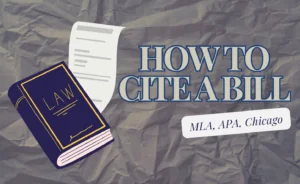Writing letters may be a thing of the past now, however, those written before present a generous source of information now. That’s why we wouldn’t want you to skip on adding a letter as a reference to your research paper just because you don’t know how to cite it. So, below, we will explain how you can properly mention and attribute any letters in MLA, APA, and Chicago formatting styles. With this information, you will therefore be able to enrich your research, literature analysis, or even essay with a new level of detail without losing academic integrity.

✅ AI Essay Writer ✅ AI Detector ✅ Plagchecker ✅ Paraphraser
✅ Summarizer ✅ Citation Generator
General Information You Need to Collect
Before you jump straight into quoting and then citing with our free citation generator you better write down all the details that will be needed for your future reference. Doing this beforehand will make the citation process much quicker and easier, leaving you with more time for actual writing. Here’s what information you need to find:
- Author and Recipient
First, you need to identify the author of the letter and the person to whom it was sent. These names will be used in both the in-text citation and the bibliography entry. - Date of the Letter
The date on which the letter was written or sent is crucial information. It helps establish the letter’s context and is a necessary component of the citation. - Title or Description
Some letters have titles, but many do not. In cases where there is no title, a brief description (such as “Letter to John Hitz”) should be provided. - Format
You should also note whether the letter is a manuscript, diary, or something else. This detail is particularly important for manuscripts, which might require specifying page or folio numbers. - Publication Information
If the letter has been published, you need to note the city, publisher, and date of publication. For online letters, include the URL and any relevant access date. - Document or Collection Number
Letters from an archive or a collection often have a specific document number or collection name. Make sure to record this detail as it helps others locate the letter.
Now, let’s consider the specific requirements for different citation styles.
Citing a Letter in APA
APA is a very common formatting style so using it for your letter citation makes sense. After all, especially if you are studying in humanities, you are more likely to be asked to format your paper using this specific format.
Thus, you should know that APA letter citations typically include the following:
- Author: The sender of the letter.
- Date: The date when the letter was written.
- Title: The title of the letter or a description, such as “Letter from [Sender] to [Receiver].”
- Unpublished: Indicating that the letter is unpublished. Note that this is extra information, that shouldn’t necessarily be mentioned, especially not if the letter was published
- Source: The name of the collection or URL if accessed online.
Considering these details, your reference list entry should follow the format:

When referencing the letter in-text, use the author’s last name and the year the letter was written.
Format: (Author Surname, Year)
Example: (Miller, 1932)
You should also consider the fact that if the letter is personal communication, use the in-text citation only:
Format: (Author, personal communication, Date)
Example: (Robbinson, personal communication, January 2024)
Adding Letter as a Reference in MLA
When citing a letter in MLA, it’s important to include specific details and format them properly. MLA letter citations usually include the following:
- Name of the Writer
- Title or Subject Line
- Generic Description: If the letter lacks a title, provide a generic description, such as “Letter to [Recipient].”
- Date and Recipient: Include the name of the person who received the letter, followed by a comma, and then the date in day-month-year format.
- Collection or Location Information: If the letter is part of a collection, include the collection name, the institution where it is housed, and the material type.
- Online Source: If the letter is accessed online, include the title of the website, followed by the URL and the access date.
As such, the reference list entry will look the following way:

In-text citations in MLA typically include the writer and recipient’s names, followed by the date.
Example: (Nin to Miller 6 Aug. 1932)
If referencing multiple letters, specify the date in brackets to distinguish them.
Example: (Nin to Miller [6 Aug])
Using Chicago for Letter Citations
When citing a letter in Chicago style, you need to include several key pieces of information in the proper format. Here’s how you can structure these citations correctly for both footnotes and bibliography entries.
- Author: Start with the author’s last name, followed by their first name and middle initial (if available).
- Title and Recipient
- Location: Include the location where the letter was written, if available. If no specific location is known, you can skip this step.
- Date: Follow this with the full date when the letter was written in month-day-year format.
- Source Information: If the letter is part of a collection, provide information about the collection and where it can be found.

Chicago style does not use in-line citations but instead employs footnotes. The general format for a footnote is:
Format: Author’s First MI. Last to Recipient First MI. Last, location at the time of writing, delivery date (month, day, year).
Example: Anaïs Nin to The Collector, Paris, August 6, 1932.
In case the letter is part of a collection, add the publication information or URL.
Example: Anaïs Nin to The Collector, Paris, August 6, 1932, in The Diary Of Anaïs Nin – Volume 3 – 1939 -1944, edited by Gunther Schuhlmann. Accessed through the following link: https://lettersofnote.com/2012/06/29/sex-does-not-thrive-on-monotony/.
Conclusion
If you think about it, adding citations is not as difficult, once you know all the specifics and rules. However, it is not possible to keep all of that information in your head all the time, especially if you are thinking about compiling valid research. There will always be something more important stuck in your head. Since this is the case, don’t be afraid to look up proper citation rules now and then. Or, which is far more effective, use free online citation generators (like the one by AcademicHelp, for example) to create any in-text or bibliography citation quickly and without unnecessary stress.
FAQ
Follow us on Reddit for more insights and updates.





Comments (0)
Welcome to A*Help comments!
We’re all about debate and discussion at A*Help.
We value the diverse opinions of users, so you may find points of view that you don’t agree with. And that’s cool. However, there are certain things we’re not OK with: attempts to manipulate our data in any way, for example, or the posting of discriminative, offensive, hateful, or disparaging material.